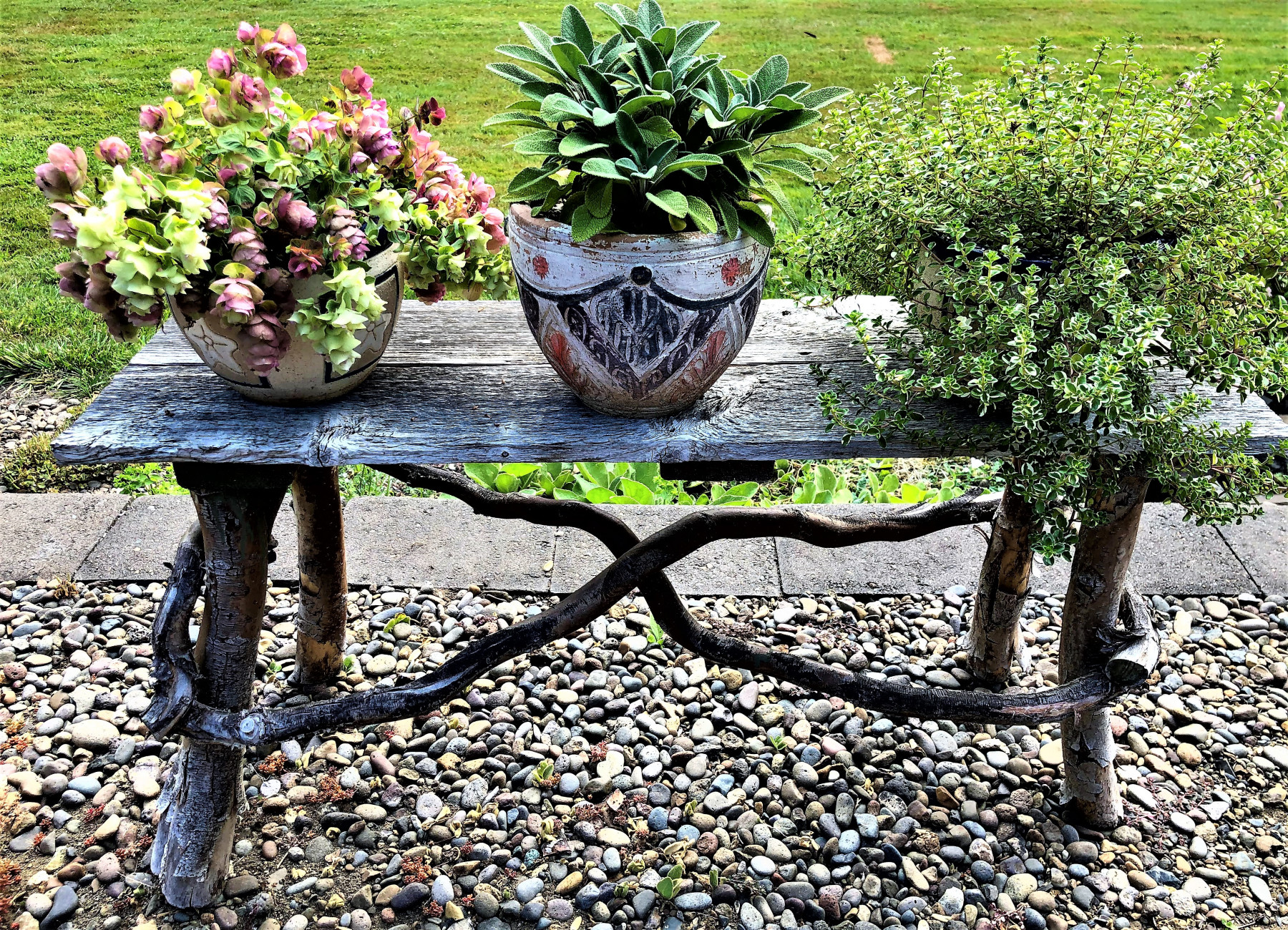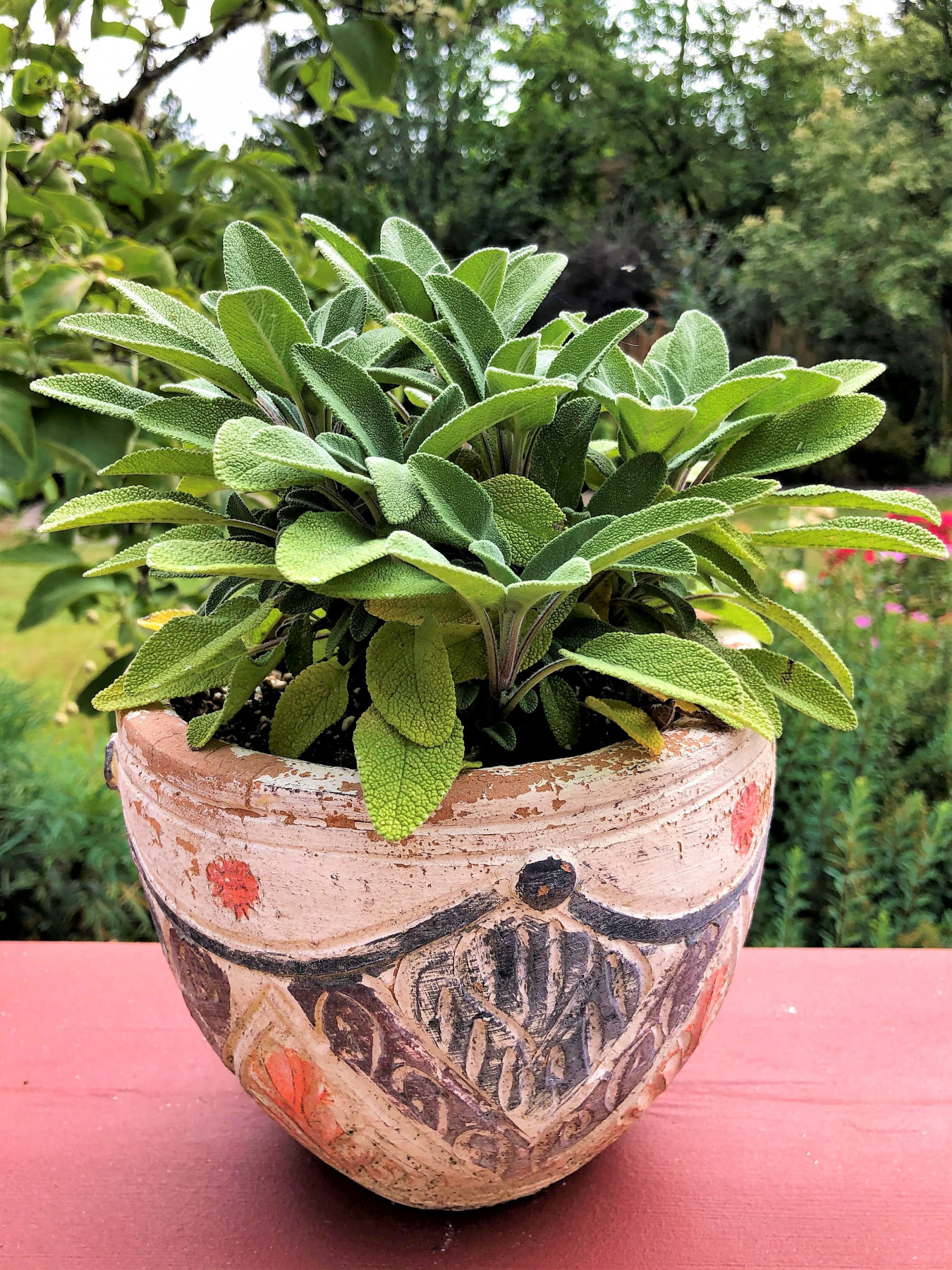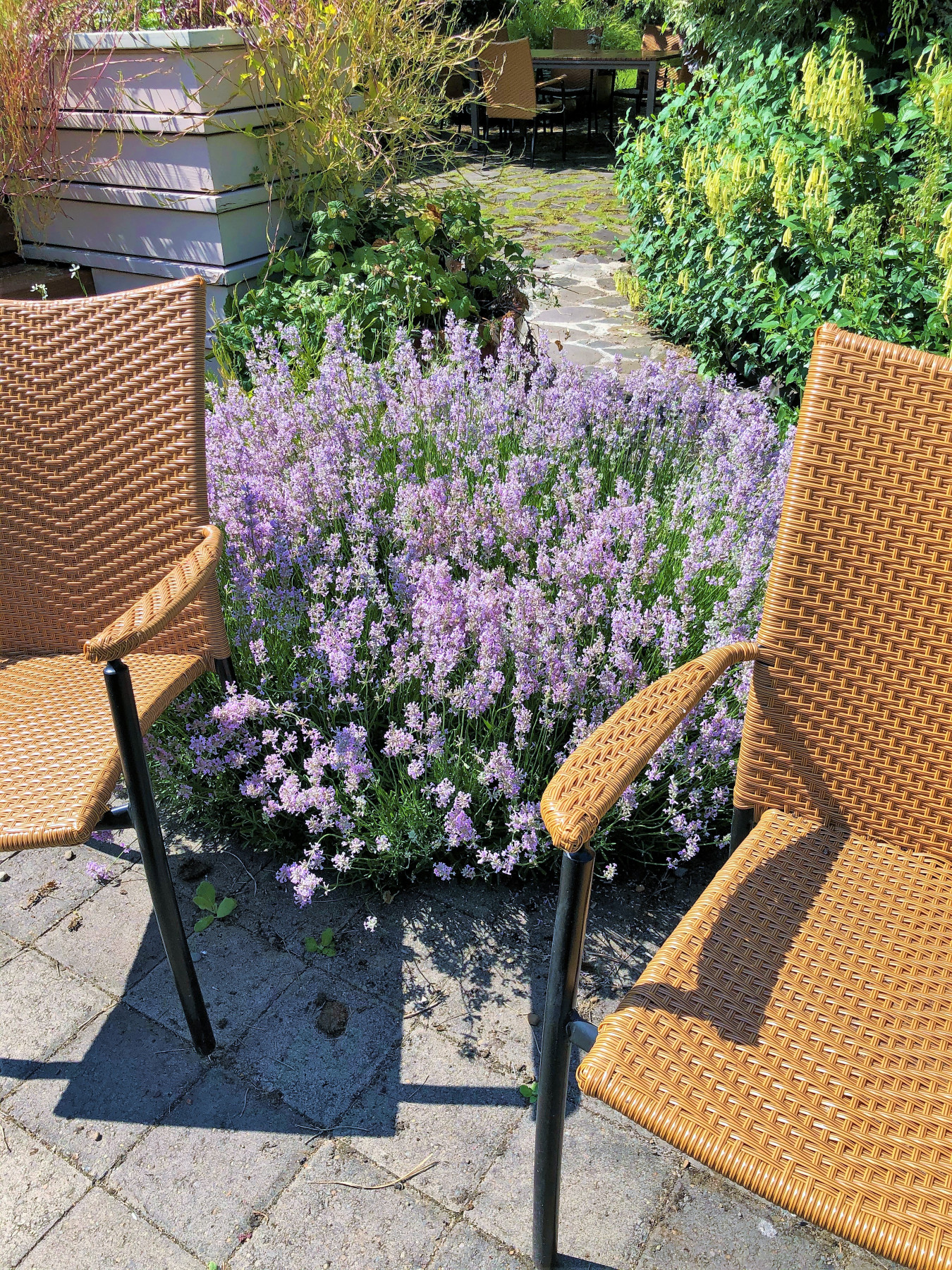
With the rush to grow edibles at home this summer, your painstaking efforts with garden stars like tomatoes or corn may mean that easy-care herbs could be overlooked. And yet, herbs can bring joy to your table, enliven your self-care routine, or enhance your gift giving. And many will continue to do that year in and year out—especially if you grow them in containers.
This month, I’m talking with Sue Goetz, garden designer, speaker, and writer, who believes that “Growing a garden of herbs should not be limited to a spot in the ground. I love the versatility of container gardening, on a windowsill, a balcony, a living wall, or in hanging baskets.” Sue’s passion for herbal containers is captured in her upcoming book, Complete Container Herb Gardening—Design and Grow Beautiful, Bountiful Herb-Filled Pots. She gives me three reasons why herbs and containers are a great match.

- Better growing conditions. “Wet heavy soil is a problem for most herbs,” Sue says. “So, a pot with good drainage holes and quality potting soil will suit the needs of these plants very well.”
- Better control. Some of the more aggressive-growing herbs, like mint, and oregano, need to be confined, as Sue notes, “so they don’t run rampant in your garden.”
- Better access. “Herbs need to be reachable to harvest,” she says. “Placing containers near the BBQ, or by the kitchen door, puts them right where you’ll use them.”
When it comes to which are the easiest to grow, Sue nominates parsley, chives, and mint as satisfying performers. And, she adds, “A nice pot of rosemary in a warm sunny spot or greenhouse is an easy starter too.” But really, most herbs are not difficult. Her advice: “Grow what you love.”

So, what about the size of the containers? Sue says most herbs need a minimum of 8 inches in depth—more is better. A single basil plant could grow in a 6-8-inch wide pot. For grouping, she suggests, “Choose a rimmed container at least 24 inches tall and wide, to accommodate the lush growth of multiple herbs.”
Herbs thrive without additional plant food. Sue says, “Most herbs do not need extra fertilizer unless the soil nutrients have become depleted over a few seasons.” She cautions against additives or chemicals for any herbs that will be eaten or used in teas or healing remedies. And avoid the kind of high-power potting mix needed for heavy-flowering annuals like petunias or geraniums. “Rich soil,” Sue says, “will make herbs wimpy and not as intensely fragrant and flavorful!”


